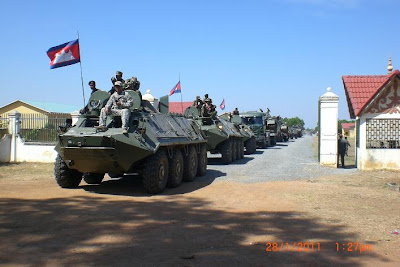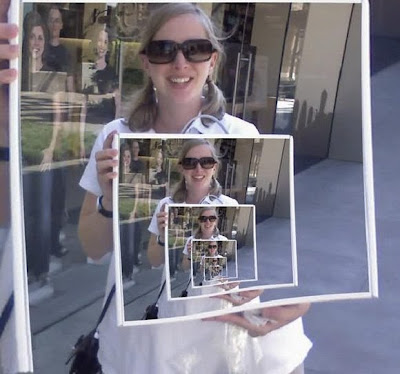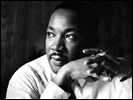
Lynsey Addario for The New York Times
Sudan has been at war with itself for almost its entire post-colonial history, starting in 1956. Nearly all of its major ethnic and religious groups have fought one another, and politics continues to be dominated by mistrust, outside interference and combustible animosities. There are dozens of armed groups across the country.
Now the country is getting ready for what could be the continent's biggest divorce. A long-awaited referendum on southern Sudan’s independence, set in motion by a 2005 peace agreement to stop one of Africa’s worst civil wars, began on Jan. 9, 2011. The south is expected to vote by as much as 99 percent for secession, splitting the largest country in Africa in two and taking with it most of Sudan’s oil.
Such a result could bring an end to the nearly one-million-square-mile experiment called Sudan, which for many troubled decades served as a bridge between the Arab and African world.

In its early stages the voting proceeded jubilantly and remarkably smoothly,
with high expectations and few serious complaints anywhere across southern Sudan. But if the referendum passes and the south breaks off from the north, a contested area along Sudan’s north-south border where
clashes have been occuring will become the next issue to resolve.
Since the peace treaty was signed in 2005, the south has been semi-autonomous, running most of its own affairs. Southern Sudan is different culturally and religiously from the northern part of the country, a contrast between Arab and Muslim influences in the north and animist and Christian beliefs in the south.
The southern leaders have rebuilt towns and invested hundreds of millions, perhaps even billions, in roads, ministries, schools and factories, much of which could be bombed into oblivion in a few days by the north’s growing air force. To keep their dreams of independence alive, the southerners seem ready to make concessions. This includes sharing the oil.
Oil may ultimately hold Sudan together. Though the south produces about 75 percent of Sudan’s crude, it is landlocked, and the pipeline to export the oil runs through the north. Cutting the flow, which provides both north and south with a huge percentage of government revenue, could be a disaster for both sides.
Oil has been behind the country's strong recent growth. According to the
International Monetary Fund,
Sudan's gross domestic product
has nearly tripled since Sudan's president,
Omar Hassan al-Bashir took power in 1989. Oil exports over the past decade have propelled the nation's "longest and strongest growth episode since independence" in 1956, a
World Bank report said.
Mr. Bashir handily won the country's first multiparty election in more than 20 years in April 2010. The fruits of the oil boom expansion - more schools, more roads, more hospitals, more opportunity - may explain why so many voters in northern Sudan supported Mr. Bashir, who is suspected of war crimes and is often perceived as a villain in the West.
In southern Sudan, the incumbent there, Salva Kiir, prevailed as well, winning 93 percent of the vote to remain president of that semiautonomous region.
Sudan's Explosive History
In 2005, the country's opposing political parties signed a peace accord that ended Africa's longest-running civil war, which killed an estimated 2.2 million people - 10 times as many as in Darfur. The perennial question is whether the relatively small group of Arabs who live along the northern reaches of the Nile and have historically ruled Sudan will share power and wealth in one of the most diverse populations on the continent. It was political exclusion that drove rebels in the semi-autonomous south to fight, and the same issue inspired the rebellion to the west, in Darfur, which has claimed an estimated 300,000 lives and blown up into one of the world's worst humanitarian crises.
The peace treaty between the north and the south, which American officials helped broker and the Bush administration considered a foreign policy triumph, was supposed to address these center-versus-periphery problems head-on. For the most part, the agreement has stopped the killing in the south, which during the 1980s and 1990s became a wasteland of burned villages, slave raiders and thousands of boys - the famous Lost Boys - trudging through the bush looking for a way out.
North-south tensions go back decades, to even before Sudan's independence in 1956. The north is mostly Muslim and historically has identified with the Arab world, while many southerners are Christian and more connected to Kenya, Uganda and other sub-Saharan nations. Beyond that, there is a huge divide when it comes to development, spawned by years of inequality.
While Khartoum has its luxury hotels and shopping malls, the south is where the roads stop. Flying over it, all you see is miles and miles of emerald green. The streets of the south's biggest cities are boulevards of mud. Children go to school under trees.
Two years after the peace treaty, much of the south was heavily militarized. The reason has been that the north has grown dependent on the oil from the south and if the south secedes, the north stands to lose billions of dollars yearly.
Both the north and south have said they want to avoid another costly war, and leaders from the two sides acknowledged that they need each other - the south has most of the country's oil and the north has most of the infrastructure. But the two sides were deadlocked over the toughest issues the treaty was supposed to solve: how to draw the north-south border, how to reform a very militarized government (the standard children's school uniform in Khartoum, the capital, is camouflage fatigues), and how to split Sudan's booming oil profits.
In July 2009, an international tribunal redefined the borders of the disputed oil region by splitting the contested zone between the two sides.
In its ruling, the tribunal, seated at the Permanent Court of Arbitration in The Hague, overruled a decision by an international commission that Sudan's government rejected four years earlier. The ruling gives the north uncontested rights to rich oil deposits like the Heglig oil field, which had previously been placed within the Abyei region, which sits on the border between north and south. But the decision leaves at least one oil field in Abyei and gives a symbolic victory to the Ngok Dinka, an ethnic group loyal to southern Sudan and likely to vote to join it in a referendum.
Darfur and Sanctions
The International Criminal Court charged Mr. Bashir in 2009 with five counts of crimes against humanity. It was the first time the court sought to detain a sitting head of state. Defiant, Mr. Bashir lambasted the West for the indictment and ordered 13 aid organizations serving millions of people in Darfur to suspend their operations on accusations that they provided false evidence to the court.
Darfur has been the focus of international attention since 2004, when government troops and militia groups known as janjaweed moved to crush rebels who complained that the region's black African ethnic groups had been neglected by the Muslim central government. The janjaweed, backed by government troops, carried out widespread savage killings of civilians. The United Nations estimates that the conflict displaced 2.7 million who are believed to have fled their homes in the face of atrocities and the destruction of villages.
In October 2009,
President Obama laid out the general aims of his Sudan policy, pledging to renew "tough sanctions" against the Khartoum government and increase pressure if it failed to improve the situation in Darfur, but also holding out the possibility of incentives if Sudan cooperated.
Violence in turbulent Darfur spiked in 2010. In May, the Justice and Equality Movement, or JEM, Darfur’s most powerful rebel group, broke off peace talks that had been taking place in Doha, Qatar, after the Sudanese government rejected its demand that it be the sole negotiator for the rebels at the table. Since then, the group has been trying to reassert itself militarily, and was forced into some confrontations after neighboring Chad improved ties with Khartoum and closed off the group’s usual escape routes over the border.
It is difficult to boil down the complicated tapestry of actors in the region, especially as rebel movements have splintered and increasingly well-armed criminals have flourished in the seven years the war has dragged on.. The conflict was first set off by clashes between nomadic Arab tribes and more sedentary Africans over water supplies. With so many Africans displaced from their lands, the Arab tribes are now fighting among themselves for the spoils, and water resources are even scarcer.
Source:
The New York Time  Hundreds of Cambodian tanks were seen being trucked out of their bases in Longvek town heading toward the Khmer-Thai borders.
Hundreds of Cambodian tanks were seen being trucked out of their bases in Longvek town heading toward the Khmer-Thai borders.














































